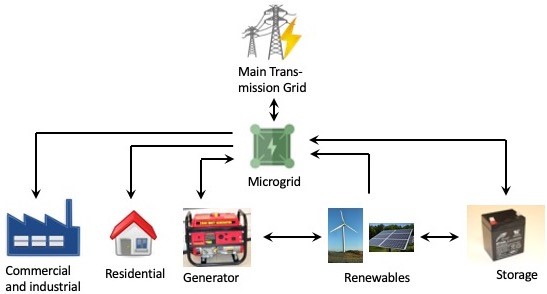By The Texas A&M University System National Laboratories Office
Researchers from Texas A&M University’s Wm Michael Barnes ‘64 Department of Industrial and Systems Engineering and Theoretical Division (T-5) of Los Alamos National Laboratory (LANL) are finding new ways to predict and operate power grids to improve performance and energy transmission. This collaboration is made possible by The Texas A&M University System National Laboratories Office and LANL.
Dr. Natarajan Gautam, Ph.D. from Texas A&M and Dr. Harsha Nagarajan, Ph.D. from LANL are working to improve power grids in light of the challenges posed by renewable energy, volatility in energy demands and  fluctuating costs across the energy market.
fluctuating costs across the energy market.
The use of renewable energy sources is increasing, with wind and solar energy accounting for almost 50% of global generation capacity in 2017. Additionally, the costs of battery storage prices are decreasing, making it easier to store renewable energy. This combination of maturing renewable energy technology and more affordable battery storage devices could lead to more communities creating their own energy rather than relying completely on borrowing power from the main transmission grid. These conditions work together to make it difficult to predict the demand, supply and price of energy needed from the transmission grid.
The focus for this project is on microgrids, which consist of a group of interconnected loads and locally distributed energy resources. They are basically the go-between from the main transmission grid to everything else. The power grid model for this project is based on a microgrid that can connect and disconnect from the main transmission grid. When it is disconnected, energy comes from a variety of renewable sources and stored energy, but when there is insufficient energy, it reconnects with the main transmission grid.
The goal of this research is to find better ways to predict energy supply and demand for microgrids with renewable energy sources. The key challenge in microgrid planning is uncertainty. Uncertainty regarding energy needs and availability exists at both the supply side and the demand side and in predicting the cost of energy based on market fluctuations.
Dr. Gautam explained, “The impact of this research would be in the widespread adoption of solar and wind energy as a majority source of power supply. There are numerous challenges that this research seeks to address that are due to the uncertainty and uncontrollability of these renewable sources of energy.”
Further, Dr. Nagarajan explained, “The outcomes of this project will also lead to a better understanding of applications of demand response program and energy markets while handling islanded microgrids with intermittent renewable energy sources. These aspects are also of great interest for the future missions of U.S Department of Energy.”
These researchers will take a unique, integrated approach that addresses all aspects that make microgrid operation and predictions difficult to make. Throughout the process, the team will explore new methods and technologies in their pursuit of a better management process.
Read more about this collaborative research project.
